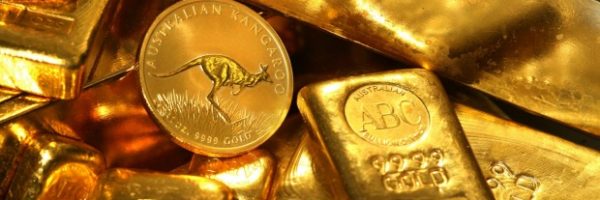Gold is in the doldrums and has been for a while, which could offer longer-term investors a rare opportunity to buy low and sell this all-important asset when its price improves.
At time of writing gold was trading at about US$1118 an ounce, down from about US$1310 an ounce a year ago. So for some analysts now is a very good time to buy gold – but the method investors choose to get exposure has a strong bearing on their potential return.
David Bassanese, chief economist with ETF house BetaShares says gold is still under pressure thanks to a rising US dollar and expectations US short-term interest rates will soon rise, two dynamics that usually put pressure on the gold price. “It’s too early to say we’ve seen the bottom; I wouldn’t be counting on a rally any time soon,” he says.
Scott Schuberg, chief executive officer of financial services business Rivkin says any further US balance-sheet expansion – QE4 in effect – would drive the gold price higher.
“But this would be an extreme policy change because the tapering off of bond purchases only finished in October last year,” Schuberg says.
“It would be a shock to see more purchases introduced and investors would view this as a real negative. Yes it would motivate gold buyers but I don’t think it’s likely to happen.”
Nevertheless, there is still a place for gold in a portfolio. Bassanese says its low correlation to other asset classes such as equities makes it an important risk management tool. “If things go pear shaped globally it’s seen as a safe haven, so it’s likely to do well in another financial crisis and it’s worth having some in a portfolio,” he says.
There is a range of conventional ways to get access to gold. One of these is to simply buy shares of companies that mine gold. But Bassanese says this approach has limitations. “You take on company risk when you buy a gold company and the correlation with the gold price is often not great.”
Another avenue is to buy gold bars or gold coins, which are available through the Perth Mint, and store them in a vault. At time of writing a one-ounce gold bar cost $A1566.86.
An additional option is to buy a gold ETF, which offers investors access to the underlying gold price. BetaShares has a gold bullion ETF hedged for currency risk, so investors are only exposed to gold and not currency movements.
Bucking the consensus view, CFD house IG’s chief market strategist Chris Weston doesn’t agree investors should hold around five per cent of a multi asset class portfolio in gold. “I would currently prefer cash or US treasuries if I wanted defensive qualities,” he says.
A long-term downtrend makes him cautious on the yellow metal. “While the Fed is openly talking about a normalisation in [interest rate] policy I continue to be neutral to bearish [on gold]. We are in a multi-year, cyclical bull market for the US dollar, similar to what we saw between 1995 and 2000. This should limit any upside in the gold price.”
Weston says there is also a deflationary pressure globally which, alongside potential rate rises in the US, indicate there’s no real fundamental rationale for being exposed to gold.
“But I’m not an outright bear,” he says. “There will be a time to increase weightings to gold but that time is not now.” As to when that time will be is up to market forces.
Schuberg has a novel exposure method if investors conclude it is time for gold to rally again. His preference is to wait until a convincing bottom in US dollar spot gold has formed and then buy mid-to-large cap gold mining companies while selling US dollar spot gold.
“As the gold price falls sharply, companies mining and producing gold are forced to quickly revise their earnings lower, due to the shrinking earnings margins caused by the fixed costs of operations and falling revenues from sales.
Should the gold price cease falling and then recover the opposite is true – the market of equity investors will re-rate gold producing companies as their earnings expand again,” says Schuberg.
“So I would sell US dollar spot gold and at the same time purchase the US Market Vectors Gold Miners ETF in equal dollar amounts. We suggested this to clients at the end of July and it is beginning to pay off,” he says.
As the US dollar spot gold price recovers, the ETF recovers much more quickly. So if you believe the US dollar gold price will continue to rise, then the gap between the price of gold miners and the gold price should shrink rapidly. This would create a profit for investors who have taken a short position over the gold spot price and bought the gold ETF or taken an outright long position over the ETF.
It’s an interesting way to profit from movements in the price of gold given current market conditions.
![]() @alexandracain
@alexandracain


